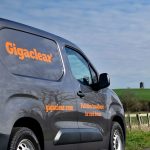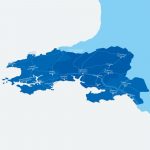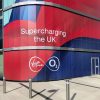UPDATE Openreach Prep Second FTTC Broadband Spectrum Refarming Test
Openreach (BT) has announced that they are to conduct a second Proof of Concept (PoC) trial of “Spectrum Refarming” technology, which in theory could result in a boost to broadband speeds by allowing different technologies (e.g. FTTC / VDSL2 and G.fast) to share the same spectrum frequency.
We explained this in more detail during May 2017 (here), but here’s a quick recap. The current ‘up to’ 80Mbps capable Fibre-to-the-Cabinet (FTTC / VDSL2) technology uses up to 17.664MHz and their latest ‘up to’ 330Mbps capable G.fast service harnesses the spectrum between 19-106MHz (in the future it will also be able to use up to 212MHz).
Both services keep their spectrum separate in order to avoid interference and also because they use two different forms of half / full duplexing (i.e. the transmission of data in two directions, either asymmetrically or symmetrically): VDSL2 uses Frequency Division Duplex (FDD) and G.fast harnesses Time Division Duplex (TDD).
Advertisement
However if it were possible for such services to co-exist in overlapping spectrum frequencies, which is incredibly difficult to do (vectoring may also be needed on VDSL2 and that’s not widely deployed), then you could in theory deliver faster speeds to consumers.
An Openreach spokesperson told ISPreview.co.uk in May that their initial PoC, which took place on 300 lines in All Hallows (Kent) via two street cabinets, was “an opportunity to explore a potential way of improving G.fast capability in terms of extending coverage and speed whilst protecting and in some circumstances improving VDSL2 performance.”
The first PoC only lasted for two weeks. Such trials typically reflect very early tests, which don’t always turn into tangible products. In that sense it’s perhaps a positive sign that Openreach, after having discussed the technology with ISPs during September and then again last week, has now decided to conduct a second PoC of Spectrum Refarming that will commence from Thursday 16th November 2017 and run for another two weeks.
Openreach would be unlikely to proceed with any upgrade that slashes FTTC (VDSL2) speeds, but if their solution is able to overcome that challenge then it could prove to be a useful performance boost.
Advertisement
UPDATE 25th October 2017
Openreach informs ISPreview.co.uk that one of the objectives in their second test will be to build confidence in the feasibility of Spectrum Refarming to improve G.fast rate vs reach, ideally without negatively impacting VDSL2 services by applying refarming using tone blackout in conjunction with VDSL vectoring.
The test will also involve a revised frequency plan that further mitigates impact to VDSL services capping VDSL at 14MHz instead of 12MHz used in the previous PoC and starting G.fast at 15MHz (usually 19MHz). Two street cabinets will be involved (two others will also be used but only as a control group) and they will be returned to normal once the test has completed.
Mark is a professional technology writer, IT consultant and computer engineer from Dorset (England), he also founded ISPreview in 1999 and enjoys analysing the latest telecoms and broadband developments. Find me on X (Twitter), Mastodon, Facebook, BlueSky, Threads.net and Linkedin.
« New UK Land Access Changes Set to Boost Mobile and Broadband Cover

















































Comments are closed